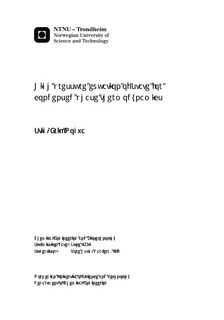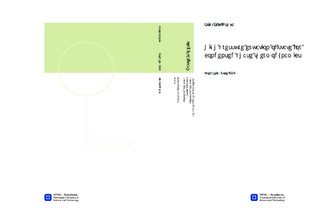| dc.description.abstract | In this study a search for an equation of state (EOS) that accurately predicts solids
behaviour at both high pressure and temperature has been performed. Firstly, several
two-parameter isothermal EOSs for solids under high pressure were investigated. The
EOSs evaluated were the Murnaghan, Birch?Murnaghan, Vinet and pseudo-spinodal. The
input parameters needed were found through parameter fitting of experimental data. The
parameter fitting was done through a second order Murnaghan equation on implicit form.
This equation was found through an integration of a Taylor expansion in pressure of the
bulk modulus. The parameters obtained were the isothermal bulk modulus, and its first
and second pressure derivative for each solid in question.
The solids investigated were the low pressure forms of MgO (periclase), CaO (lime),
Al2O3 (corundum), SiO2 (-quartz), NaCl (halite) and MgCO3 (magnesite). The names
given in parenthesis are the names of the minerals found naturally on Earth. The
experimental data found in the literature is from measurements on synthetically produced
solids, but the data is often used to represent the natural mineral as well.
In order to test the two-parameter EOSs against each other, the standard deviations for
the parameters were needed. The standard deviation was found through bootstrapping
and maximum likelihood, i.e. two dierent statistical methods. These two methods gave
comparable results for the standard deviation of the parameters (±5 − 65%) except for MgO, which was found to reject the null hypothesis of normal distribution based on a
2-test. Thus, the optimal parameters were reported using the bootstrap method, which is
distribution independent. The optimal parameters obtained, including their uncertainties, were then used to test which of the two-parameter EOSs give the best fit to experimental data.
Based on the analysis completed in this study, all the EOSs tested, except the first order Murnaghan were close to the standard deviation for all the dierent solids investigated at high pressure. Thus, a general conclusion on which EOS that gave the best fit for all the solids examined could not be drawn. Nevertheless, the pseudo-spinodal EOS has some promising features when it comes to high temperature and high pressure predictions, and was therefore used to model the complete pressure-volume-temperature surface. Predictions of the heat capacities, thermal expansion and the isothermal bulk modulus at high pressure and temperature for NaCl and MgO were done based on the pseudospinodal EOS. The thermal expansion and the complete pressure-volume-temperature surface predicted were also compared with available experimental data. The predictions give good fit to the data. However, from this analysis it may seem that the pseudo-spinodal EOS gives better fit for alkali halides than for oxides due to the dierence in thermal dependency of the Grüneisen parameter for these two substance groups. For alkali halides,e.g. NaCl, the Grüneisen parameter generally decreases with temperature. For oxides on the other hand, e.g. MgO, the Grüneisen parameter increases with temperature. This opposite temperature effect on the Grüneisen parameter for oxides and alkali halides has implications on the model predictions within the framework of the pseudo-spinodal EOS.
The major finding in this report was that an inconsistency in the pseudo-spinodal EOS was found at high pressure. This EOS predicts negative heat capacity at very high pressures and low temperatures. It is recommended in further work to search for a consistent way of including internal energy. This will provide an EOS of great value in the prediction of high pressure and high temperature effects on solids. | |

